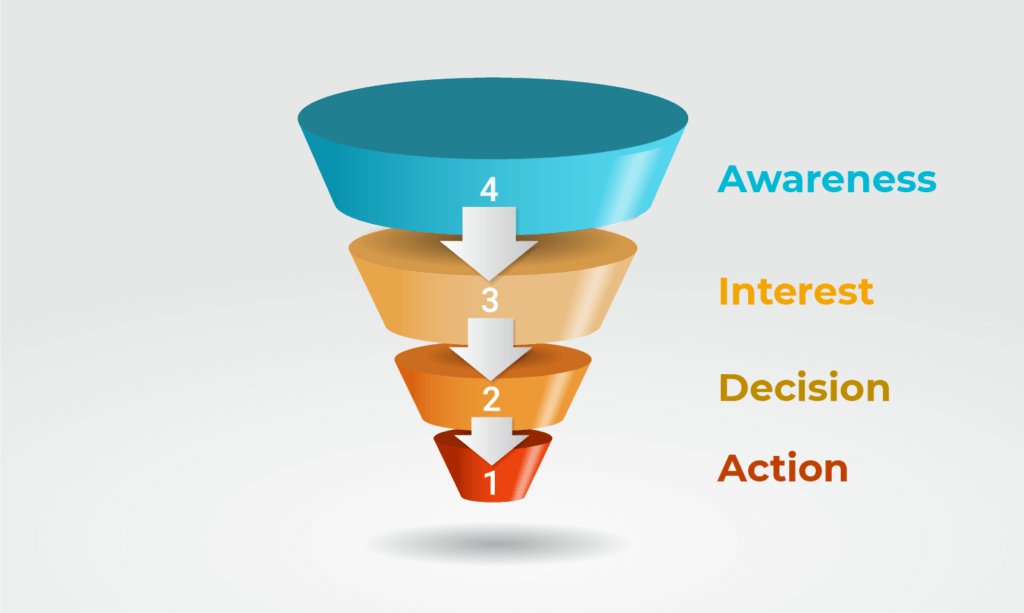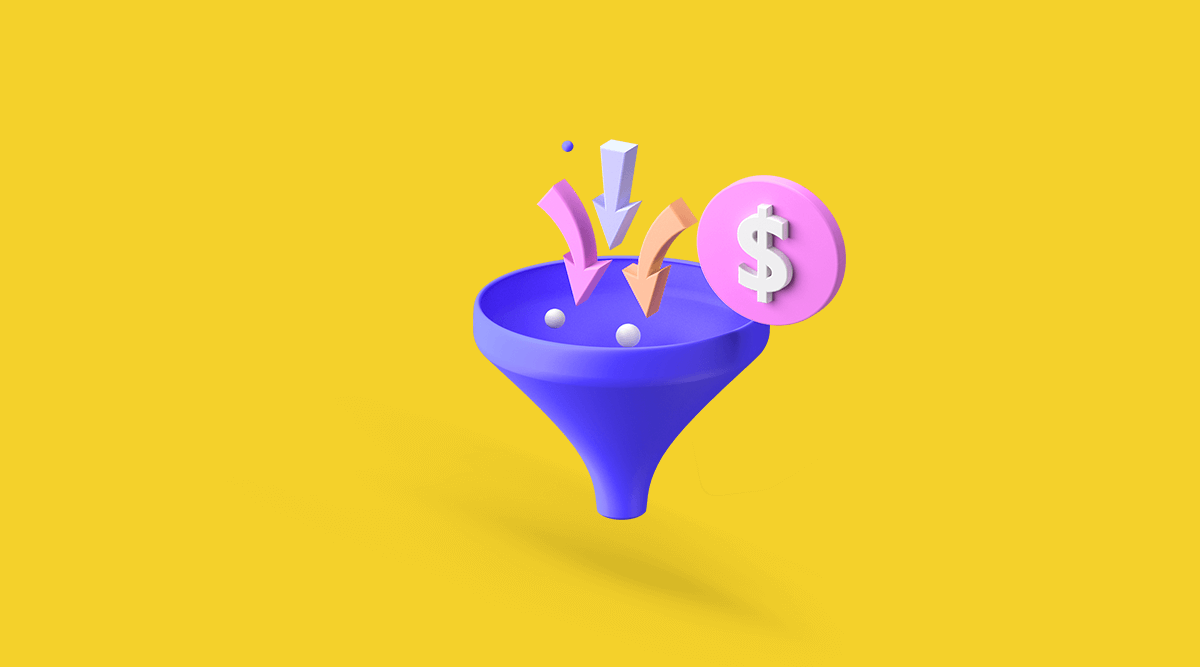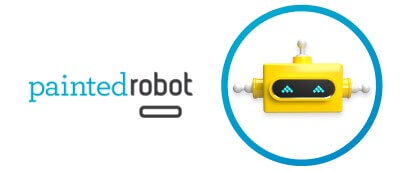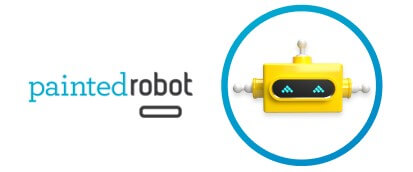Marketing strategies are for everyone.
It doesn’t matter whether you run a fledgling side business by yourself or a multi-employee startup that isn’t such a ‘start’ anymore. An effective strategy can make all the difference.
As a company, embracing the digital age and making it work in your favour is one of the keys to relevancy.
Enter the sales funnel.
It’s a broad concept, but the intent is to utilize the myriad of different tools at your disposal to generate prospects, evolve them to qualified leads, then finally into loyal customers.
These tools range from active and engaging blog posts, healthy social media presence, hosting webinars, podcasts, helpful YouTube videos, targeted ads, chatbots, and leveraging networking platforms like LinkedIn.This article will break down what exactly the sales funnel is. Additionally, we will discuss how using one in conjunction with data-driven CRM software can help your capture, measure and convert your different channel leads into tangible results.
So, what is a Sales Funnel?
It’s common for businesses even today to still not have even a basic sales funnel structure.
A lack of sales direction can lead to a woefully high amount of your qualified leads fizzling out. They’ll seek out the answer to their issue elsewhere. If your business has the answer, why let that happen?
In short: a sales funnel is a measured database, and visual representation, of how many of your prospects become customers.
Like a real-life funnel, sales funnels naturally narrow down as it approaches the bottom. It’s a natural way of culling through the sea of casual browsers and identifying qualified leads.
These are the would-be customers who are serious about purchasing what you’re selling.
Having a clear-cut sales funnel not only makes it easy and even enjoyable for customers to navigate the buying process, but the process bolsters your company’s visibility and bottom line. The sales funnel has four stages. These stages can be broken down further or carry different names, but the below terms represent the gist of the customer experience through the sales funnel:
- Awareness
- Interest
- Decision
- Action

A deep dive into the sales funnel stages:
Awareness:
Brand awareness is achievable in so many different ways. It could be a Google search for an issue an individual is experiencing that leads the prospect to land on your deftly optimized blog post. It could be a paid ads via TikTok or YouTube or a strategic social media post via Facebook or LinkedIn.
The conclusion of this stage is usually lead capture. Lead capture can be signing up for an email list or a free trial of your service. This tool gives your prospect an incentive to continue down the funnel and provides you with the means for a personalized approach that keeps your company in its peripherals.
Interest:
In this stage, the prospect starts comparing product options, pricing, and ease of access. The prospective customer now knows what their problem is – and they’re looking for the answer. You want to make sure that it’s your company!
Having educational content in the form of an email blast, an informative blog, engaging YouTube content, or a helpful podcast is critical. It keeps your lead interested and shows that you can help them solve their issue.
Decision:
The decision is a crucial stage in further funneling your qualified lead down to customer status. Your prospective buyer is ready to make their purchase – it’s time to sweeten the pot. They’ve now focused on two or three vendors who can provide the solution to their problem.
This stage requires knowledgeable FAQ pages, a quality About Us page, and a plethora of feature analysis and demo content that will drive the point home that your business is the authority on the matter and the solution to their problem.
Finesse the call to action with a bonus product offering, free shipping, or a discount. Hopefully, this will be the deciding factor between you and the other businesses.
Action:
Your qualified lead has become a customer. Congratulations!
The process doesn’t end here, though. This stage is where you cement your relationship with your customer and foster loyalty. Continuously raising awareness of your services via email blasts, sales, promotions, and other loyalty offers will keep them coming back and encourage them to recommend you to their contacts. Be aware that this is a delicate balance. It’s important to be available and visible to your prospects and leads, but too much too soon can become overwhelming and can cause your potential customer to seek their answers elsewhere.
The relationship between sales funnels and sales pipelines
Sales funnels and sales pipelines are often confused with each other – to no one’s surprise – they are very similarly defined.
Yet, they work in conjunction with each other. An efficient sales pipeline that functions as part of the overall sales funnel is invaluable.
Let’s discuss how a sales pipeline functions. These concepts go through similar stages as the funnel, with some variation. The terminology may change as you move through the marketing realm, but it goes a little something like this:
- Prospect Generation
- Qualification
- Meeting
- Proposal
- Close
Sounds a lot like the funnel, right? Here’s how they differ:
The sales pipeline is an overall look at the stages each prospect will go through on their way to becoming a customer – from the seller’s perspective.
The sales funnel is a larger representation, often a quantifiable value, of how many of these leads become customers.
Your greater sales funnel can feed multiple pipelines that require different stages and actions from qualification all the way through to closed won or lost. It is helpful for keeping your sales effort segmented, structured, customized and organized.
Reviewing your sales funnel periodically will help identify certain prospecting sources that are not as effective as others. If your demographic resides mainly on Instagram, it doesn’t make more sense to continuously mine prospects (via targeted ads, for example) on Facebook – an entirely different platform that caters to an entirely different consumer. Finally, an effective sales pipeline will have tracking and forecasting implemented to ensure that you are optimized and will repair any ‘leaks’ in your ‘pipe’ before they become a long-term issue.
How to keep it all organized?
Of course, this is a great deal of information to keep organized – especially if you’re a small to medium-sized company with many irons in the fire.
So how to maintain control over your overall sales process? Most companies today will use a CRM system, which stands for Customer Relationship Management.
What is CRM software?
Effective CRM software will compile customer data from all channels and translate it into digestible data for your team.
This information will aid in lead generation, sales, retention, customer satisfaction, and identify ways your business can achieve growth.
Many CRM software platforms, like Zoho, have integrated sales funnel charts that show you vital statistics on prospects, those who prematurely bounce off of the site, and will help you better understand how the purchase journey works.
CRM software solutions are be highly customizable, capable of powerful automations, and are proving invaluable to businesses (both short and tall) worldwide!
Benefits of CRM software:
Comprehensive Customer Service:
A CRM will organize all customer data into one place, providing you with easy-to-read visual data that shows you anything from recent contact with your company to how often they purchase from you. This ensures your interactions with your customers remain smooth and consistent – which can only help with retention efforts.
Sales growth:
A CRM will provide your business with invaluable data on your sales pipeline and how it relates overall to your sales funnel. By making the sales process consistent, optimizing existing practices, and providing clear numbers – your business may see increased growth.
Automating these processes takes some serious legwork out of the sales process. Removing the tedious administrative work that comes with onboarding new customers or meeting with prospects allows your sales team to become more customer-focused, with accurate data about these individuals a click away.
Retention:
Aside from helping your company with improved and consistent customer service best practices – a CRM is vital for retention. Your CRM can streamline customer support ticketing or case systems, and can even monitor when customer turnover happens and why, so you can act to correct any weak spots.
Analytics:
Graphs, tables, charts, and more. When you have all of the information you can gather about your business at your fingertips, you have the power to make real strides in company growth. Data analysis allows you to make high-level decisions with high-level information. Analytics can identify weak points without bias. For example, Zoho CRM provides custom, visually friendly data for every facet of your sales process, which allows you to optimize the effort your team puts into the sales process.
Sales Funnel FAQ
How does a sales funnel work?
A sales funnel is a visual aide that shows businesses the conversion rate of how many prospects become customers.
What are the stages of a sales funnel?
– Awareness
– Interest
– Decision
– Action
How do you set up a sales funnel?
Sales funnels are often set up through Customer Relation Management software systems implementation partners or companies but can sometimes be set up in house. CRM systems make it easy to see your overall sales process and performance on demand.
Conclusion
The sales funnel is a vital tool in ensuring the success of your business, and a CRM can manage this aspect and so much more for your business.
When you take much of the manual administrative work out of customer relations, the sales process, and retention – you can focus on what really matters: growing your bottom line. If you are interested in what CRM software can do for your company or organization we provide free discovery sessions to scope out your need and discuss the different options that best fit your needs. https://wordpress-538545-1971671.cloudwaysapps.com/business-tools/








